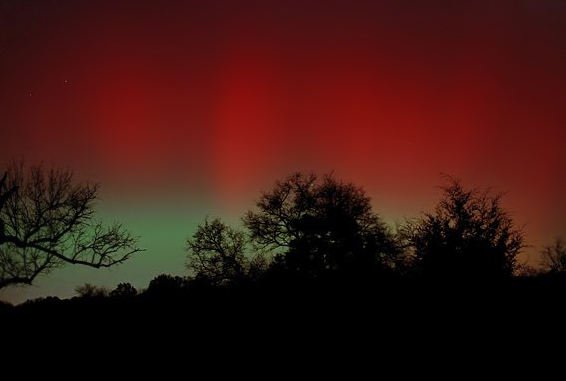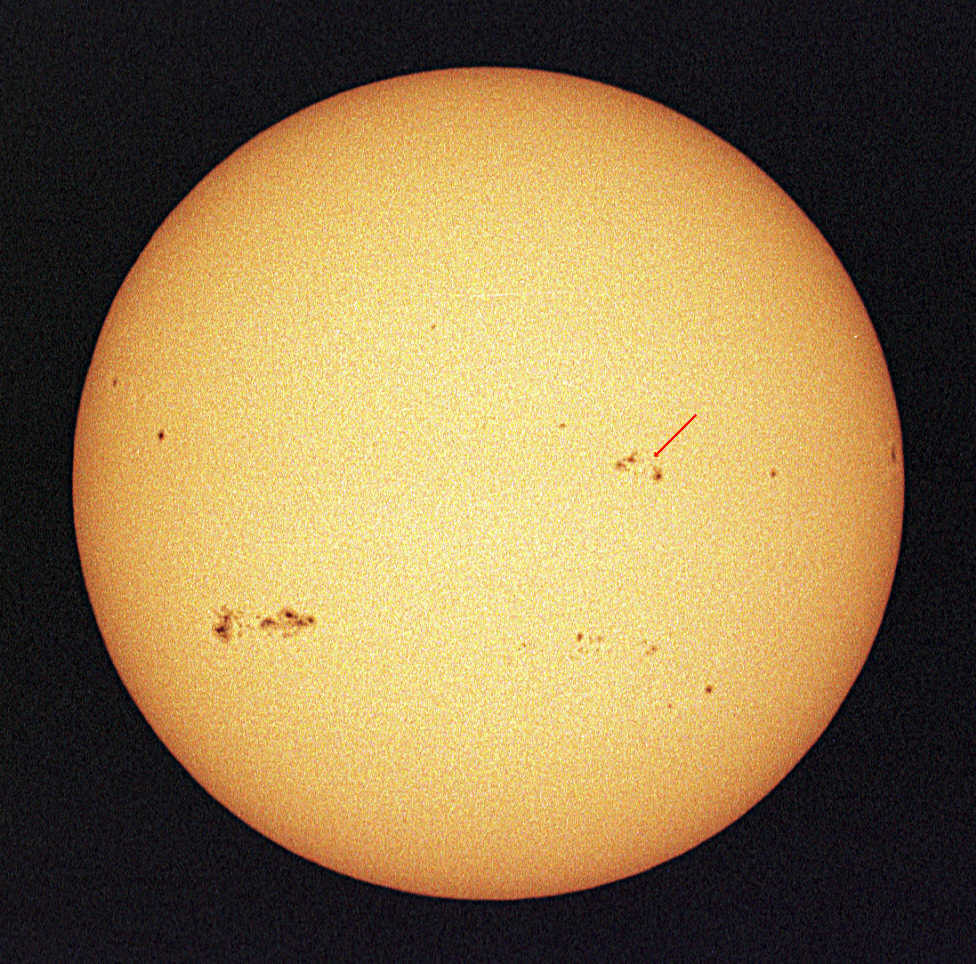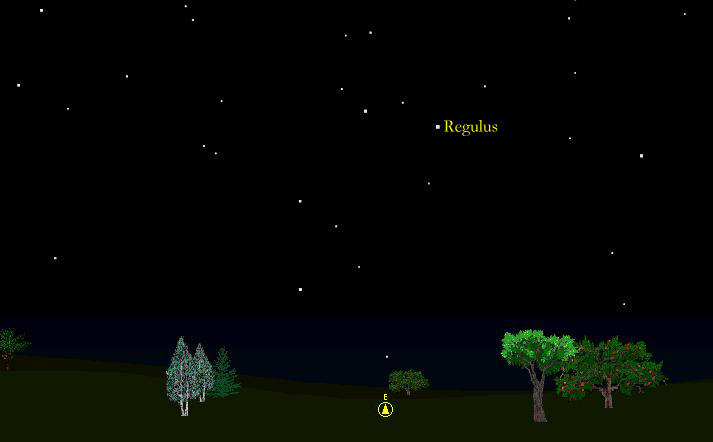Back
A Tennessee Aurora - The November 5th Display of the Northern Lights
The night of November 5th was a very special night for us. Earlier in the evening I had been viewing Uranus and Neptune through our 6" refractor. At 9:00pm CST, I decided to go back out and take a look at Saturn through the scope. I happened to look north and when I did I found the entire northern sky bathed in a red glow. I immediately ran back inside to get Andrea and as I came in the telephone was ringing. It was Jean Buchanan, the Director of the Owls Hill Nature Center in Brentwood, Tennessee. "Have you seen the sky in the last few minutes?" she asked. We agreed that the glow must be the aurora and Andrea and I dashed back outside to view the sky. We set up a couple of lounge chairs facing north and, beneath a couple of blankets, watched the northern horizon. Tucked in a warm pocket in the front of Andrea's pullover was Stella, our ferret. Now 7 years old, her health had been failing during the last month. Stella's head would peer out of the pocket now and then as she looked about. The northern sky, from about 20 degrees east of due north to 65 degrees west, was pulsing with an orange-red glow. The glow extended upward to an altitude of about 50 degrees. Vertical shafts would appear from time to time, looking like searchlights in the glow. The waning gibbous moon rose in the east with the planet Jupiter in tow. I reluctantly pulled myself away from the view to get my camera and a 35mm lens, and found some Fujicolor 400 Press film in the refrigerator. Setting the camera on a tripod and using the Shagbark Hickory in our field to shield the camera from the moon's light, I took several photographs. Just above the northern horizon, beneath the red glow, the horizon was strangely bright - but the cast of light was different from that of light pollution. The red pulses intensified. We saw some as far west as the constellation Cygnus, and as far east as Betelgeuse in Orion. I saw one memorable dagger of red light pierce the constellation Perseus, centered on the "demon star," Algol. The red glows subsided for a time around 9:45pm CST, and a enormous bow of faint light appeared, spanning about 120 degrees of the sky. About 10 degrees wide, it originated near the stars Castor and Pollux in the constellation of Gemini in the east, passed directly through the north star, and terminated in the constellation Lyra to the west. From 10:00pm CST to 11:30pm CST when we went back inside, the red glows returned, pulsing weakly along the northern horizon. The next morning I was getting ready to photograph the sun when Andrea came in and said, "Stella's dead." We had tucked her back into the blankets in her cage before we went to bed. Sometime after that, while the faint red glows pulsed along the northern horizon, she slipped away. We buried her that morning in a thicket of redbud and cedar trees in our front yard. The thicket opens with a view to the north.
If you would like to purchase a copy of the Tennessee Aurora print, go to the LEAPS Store. For more information about the November 4th flare, go to the Sky and Telescope News Page. At the end of the Sky & Telescope page, you can opt to subscribe to an auroral alert service (free) that e-mails you when there is a chance of an auroral display. For general information on auroras, you might try this Norway site.
A Brilliant Meteor As if the auroral display of the previous night was not enough, we were treated to a brilliant meteor Tuesday evening, November 6th around 9:00pm CST. We were returning from our barn to the house when a point of light appeared in the constellation of Andromeda and blazed its way northward. It lit up the field with its light and then exploded. I would estimate its magnitude as about -6.0. This is between the brightness of Venus and the full moon. It was dazzling.
The Leonid Meteor Shower Mark your calendar for the early morning hours of Sunday, November 18th. This is the time that this year's Leonid meteor shower is supposed to peak. The actual peak is predicted to occur at 4:00am CST but I recommend spending as many of the morning hours outdoors as you can till daybreak, I also recommend that you check the skies around 3:00am the day before on November 17th, just in case the predictors are wrong. We checked the skies the day before the predicted peak in 1998 and had a truly amazing display of bright fireballs, some leaving trails that lasted for minutes. We watched transfixed until dawn. The image below shows the view looking east at 2:00am on the morning of November 18th. Look for the bright star Regulus that marks the bottom of the "sickle" that forms part of the constellation Leo. The radiant of the shower, the point where the meteors appear to radiate from, is within the "sickle." Click here for a finder chart to print out and take outdoors.
We take a couple of folding lounge chairs outside with us along with some warm blankets and set them up facing east. Dress warmly - it can be pretty chilly in the predawn hours. Do not take the lounge chairs out in advance - they may be covered with dew by the time you observe. A thermos full of warm coffee or hot chocolate makes everything even better. From that point on you can just sit back and enjoy the show.
|

 The
sun on 11/08/01 showing the sunspot group that triggered our aurora.
The
sun on 11/08/01 showing the sunspot group that triggered our aurora.
